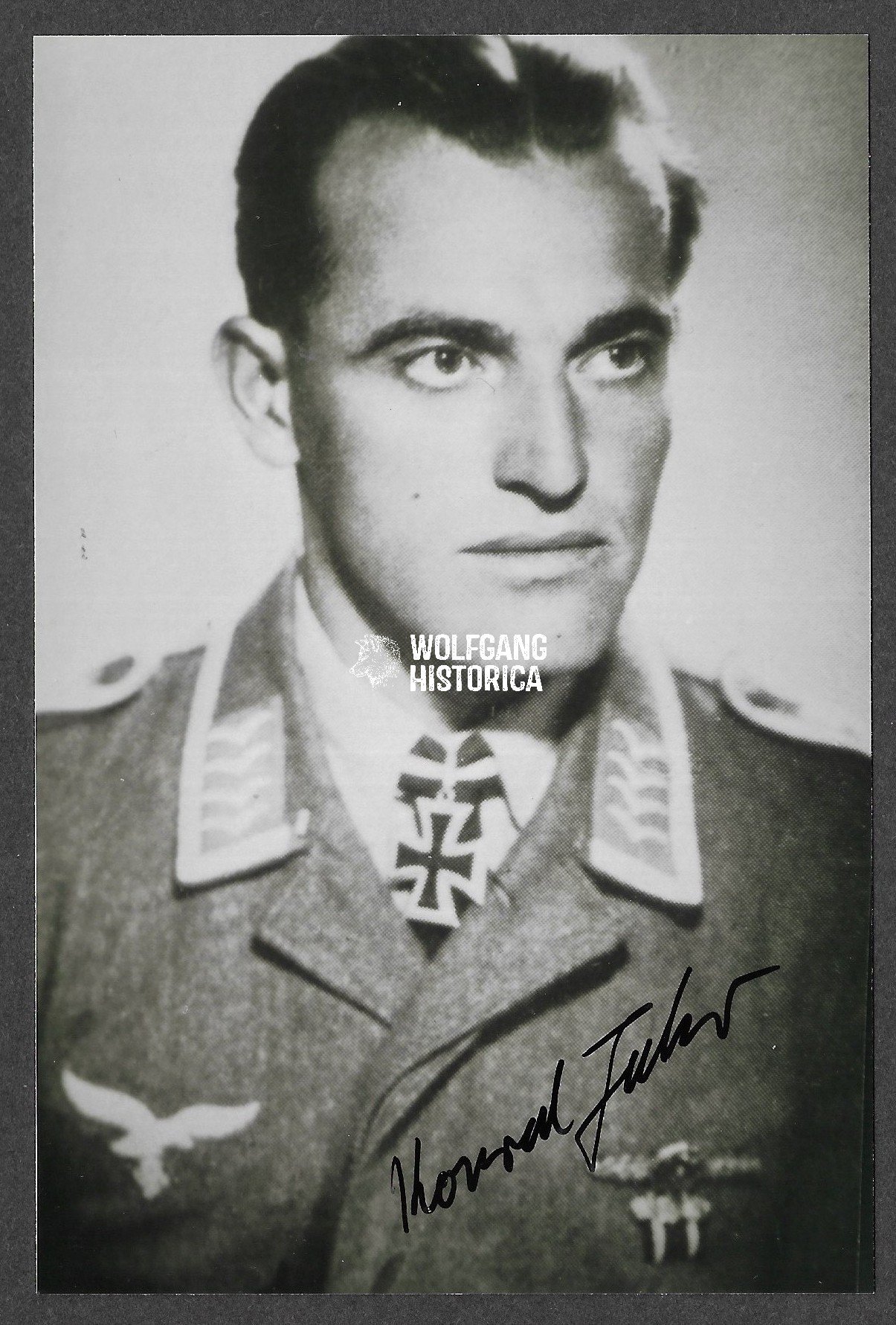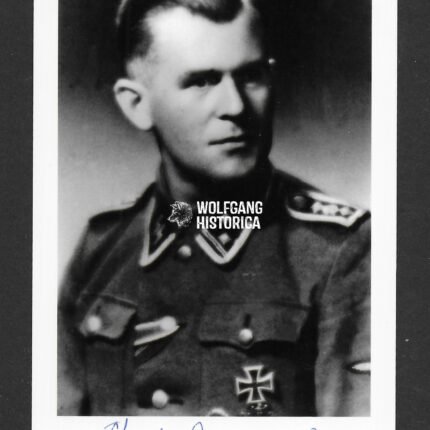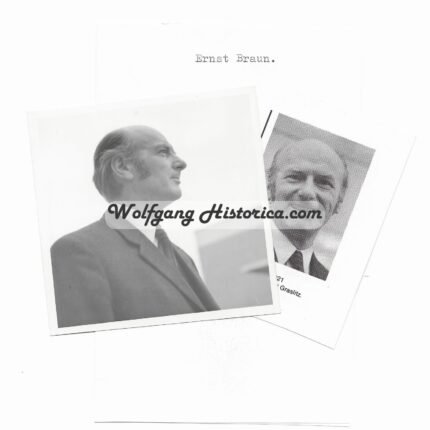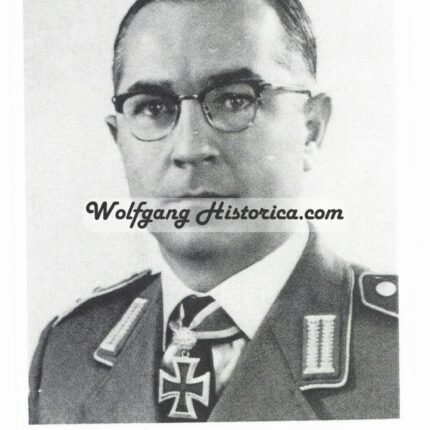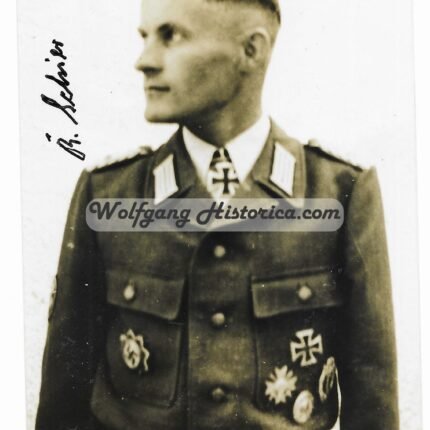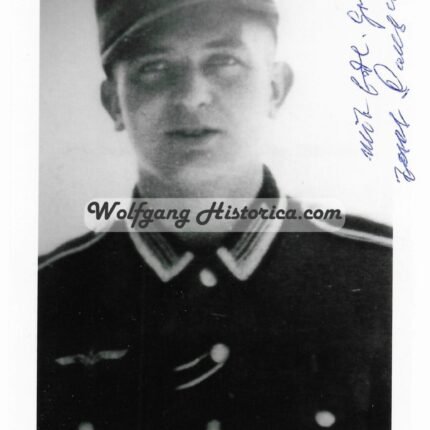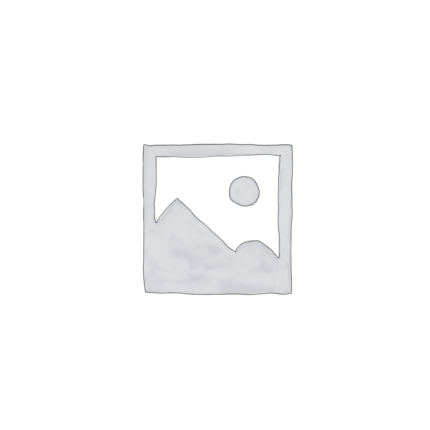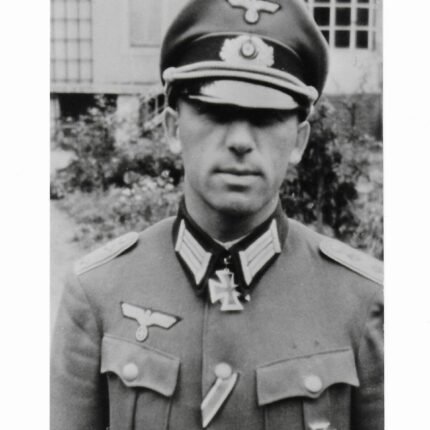Konrad Fechner – Schlachtgeschwader 77
€20,00
Original Postwar Signature on a Postwar Photo of Konrad Fechner. Feldwebel Konrad Fechner (1 November 1918, Hofmeteln/Schwerin – 27 July 2013, Hahausen/Lower Saxony) was a highly decorated Luftwaffe ground-attack pilot, credited with flying over 726 combat missions during the Second World War. Serving primarily with Sturzkampfgeschwader 77 (StG 77) and later Schlachtgeschwader 77 (SG 77), Fechner flew both the Junkers Ju 87 Stuka and the Focke-Wulf Fw 190 in front-line service. His final mission took place on 8 May 1945, the very day of Germany’s capitulation.
Awards and Decorations
-
Ehrenpokal der Luftwaffe (Honor Goblet of the Luftwaffe) – 7 December 1942 as Unteroffizier, Flugzeugführer in 6./StG 77.
-
Deutsches Kreuz in Gold (German Cross in Gold) – 17 April 1943 as Unteroffizier, Flugzeugführer in 6./StG 77.
-
Ritterkreuz des Eisernen Kreuzes (Knight’s Cross of the Iron Cross) – 4 May 1944 as Feldwebel, Flugzeugführer in 6./SG 77, awarded for completing approximately 700 ground-attack sorties in the brutal fighting on the Eastern Front.
Career Highlights
-
Frontline Service: Flew 726 combat missions, primarily in the close-support role against Soviet armor, artillery, and troop concentrations.
-
Aircraft: Began flying the Ju 87 Stuka dive bomber, later transitioning to the Fw 190 F-series ground-attack fighter-bomber.
-
Decorated Veteran: Progressed from the Ehrenpokal and the Deutsches Kreuz in Gold to the Knight’s Cross, reflecting his consistent performance and courage in combat.
-
End of the War: Carried out his last combat sortie on 8 May 1945, symbolically closing his wartime career on the final day of hostilities in Europe.
Collector’s Note
Konrad Fechner stands among the notable Luftwaffe Schlachtflieger (ground-attack pilots), men who flew dangerous low-level missions against heavily defended targets. His record of over 700 sorties places him within the elite circle of decorated front-line veterans whose awards trace the escalation of their service. For collectors, Fechner’s name represents both the tenacity of the Luftwaffe’s close-support units and the high-risk, relentless combat endured by Stuka and Fw 190 pilots on the Eastern Front.
Out of stock
Original Postwar Signature on a Postwar Photo of Konrad Fechner. Feldwebel Konrad Fechner (1 November 1918, Hofmeteln/Schwerin – 27 July 2013, Hahausen/Lower Saxony) was a highly decorated Luftwaffe ground-attack pilot, credited with flying over 726 combat missions during the Second World War. Serving primarily with Sturzkampfgeschwader 77 (StG 77) and later Schlachtgeschwader 77 (SG 77), Fechner flew both the Junkers Ju 87 Stuka and the Focke-Wulf Fw 190 in front-line service. His final mission took place on 8 May 1945, the very day of Germany’s capitulation.
Awards and Decorations
-
Ehrenpokal der Luftwaffe (Honor Goblet of the Luftwaffe) – 7 December 1942 as Unteroffizier, Flugzeugführer in 6./StG 77.
-
Deutsches Kreuz in Gold (German Cross in Gold) – 17 April 1943 as Unteroffizier, Flugzeugführer in 6./StG 77.
-
Ritterkreuz des Eisernen Kreuzes (Knight’s Cross of the Iron Cross) – 4 May 1944 as Feldwebel, Flugzeugführer in 6./SG 77, awarded for completing approximately 700 ground-attack sorties in the brutal fighting on the Eastern Front.
Career Highlights
-
Frontline Service: Flew 726 combat missions, primarily in the close-support role against Soviet armor, artillery, and troop concentrations.
-
Aircraft: Began flying the Ju 87 Stuka dive bomber, later transitioning to the Fw 190 F-series ground-attack fighter-bomber.
-
Decorated Veteran: Progressed from the Ehrenpokal and the Deutsches Kreuz in Gold to the Knight’s Cross, reflecting his consistent performance and courage in combat.
-
End of the War: Carried out his last combat sortie on 8 May 1945, symbolically closing his wartime career on the final day of hostilities in Europe.
Collector’s Note
Konrad Fechner stands among the notable Luftwaffe Schlachtflieger (ground-attack pilots), men who flew dangerous low-level missions against heavily defended targets. His record of over 700 sorties places him within the elite circle of decorated front-line veterans whose awards trace the escalation of their service. For collectors, Fechner’s name represents both the tenacity of the Luftwaffe’s close-support units and the high-risk, relentless combat endured by Stuka and Fw 190 pilots on the Eastern Front.



